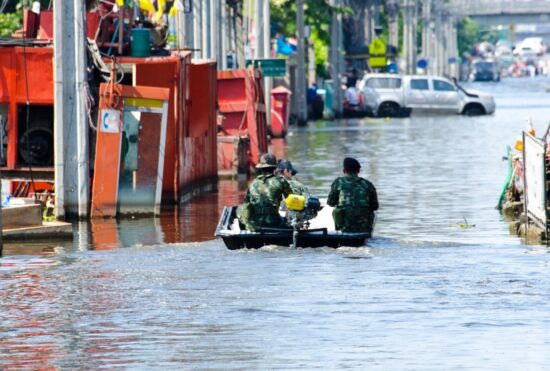In today’s modern world where everything revolves around technology and innovation, the need to learn primary life skills has never been more important.
How can we survive, let alone rescue someone, in the face of natural disasters?
We are fortunate to have first responders – these individuals are well-equipped with the skills and knowledge to provide assistance and even save a life during emergencies. But first responders aren’t born with these know-hows, they undergo rigorous training and obtain certifications to do their jobs.
One of the most important trainings that a first responder can undergo is swift water rescue training, a type of technical rescue preparation that involves fast-moving water conditions.
Jonathan Paige of New London Connecticut explores the specialized training required to handle water-related emergencies, particularly swift water rescue training.
Swift Water Rescue
Also referred to as “white water rescue”, this applies to any rescue environment that involves moving water, whether in an urban or rural setting. This includes areas that are not normally submerged, like flooded roads.
While not formally defined, the accepted standard qualifications are as follows:
- Water depth of more than 2 feet
- Minimum flow rate of one knot (1.15 miles/hour)
- Occurrence in natural waters, flood control channels, or any environment affected by flood
Requirements for Training
When it comes to swift water rescue training, there is currently no national standard of requirements. However, many organizations use the National Fire Protection Association (NFPA) Standard 1670 as a reference when setting their guidelines and implementing their training qualifications.
Training programs are also designed to meet the NFPA 1006, which is the Technical Rescue Personnel Professional Qualifications Standard.
Swift water rescue training technician courses usually operate under the NFPA framework and employ both classroom and in-water instructions. A few of the many topics covered in training include the following:
- Self-Rescue
- Pre-Planning
- Hydrology
- Personal Protective Equipment
- Hazards and Risk Management
- Basic Rope Systems
- Rescue and Search Techniques
- Watercraft and Helicopter Rescue Considerations
- Communication
- Swift Water Terminology

Physical Requirements for Training
Most training programs will require a trainee to be at least 18 years of age, a proficient swimmer, and physically capable.
Equipment Needed
To train for intense water rescues, the following equipment is required:
- Drysuit or wetsuit
- Type III or V Personal Flotation Device
- Helmet for Water Sports
- Running Shoes
- Neoprene Footwear
- Fleece or Wool Clothing Including Shirt, Pants, and Socks (to wear under the drysuit or wetsuit
- Neoprene Gloves (optional)
Trainees can bring their own equipment or rent from the organization providing the training.
To become a true certified Swiftwater Rescue Technician, trainees must undergo the following courses following the NFPA training model:
- NFPA Swiftwater Rescue Training (1006 OPS)
- NFPA Swiftwater Rescue Training (1006vTechnician)
- PRO-SAR Course that complies with the NFPA Standard 1006 for Surface Water, Swiftwater, and Floodwater
- Technical Rope Rescue
Rigorous training is required to become a Swiftwater Rescue Technician, which makes them indispensable members of the rescue industry.
Conclusion
Swift water rescue training is a vital component of first responder education, equipping individuals to handle water-related emergencies with precision and efficiency. The significance of this specialized training, which encompasses a range of topics from self-rescue techniques to hazard management, cannot be overstated. While there is no national standard for swift water rescue training, organizations often align with NFPA guidelines to ensure comprehensive instruction.
Physical fitness, coupled with specific equipment, is crucial for trainees, and completing the requisite courses leads to certification as a Swiftwater Rescue Technician. These dedicated professionals play a pivotal role in safeguarding communities during water-related emergencies. Their unwavering commitment is nothing short of heroic, making them indispensable assets in any emergency response team.
